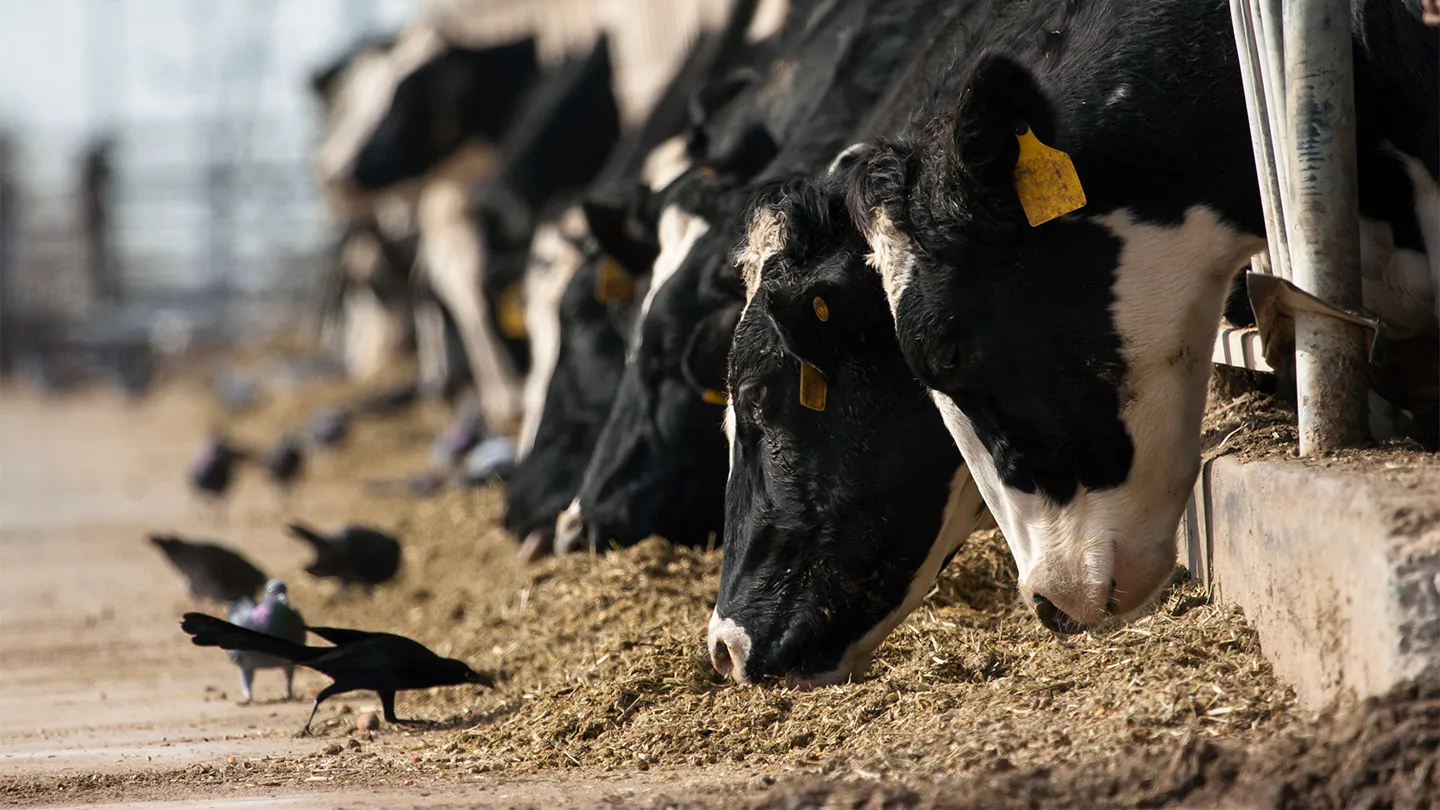Why are US dairy farmers skipping bird flu tests? Learn how economic worries might be hiding the true number of cases. Curious? Read more now.
Summary: What’s really happening on America’s dairy farms? A startling undercurrent lurks beneath official bird flu numbers. Dairy farmers across the U.S. are avoiding tests, driven by fear of economic setbacks and skepticism about the real threat of the virus. Since March, the USDA has identified bird flu in 190 dairy herds across 13 states, but experts believe this is just the tip of the iceberg. Joe Armstrong, a veterinarian from the University of Minnesota, estimates the true number of affected farms could be three to five times higher due to widespread underreporting. With cases in states like Colorado, Michigan, and Minnesota likely being significantly undercounted, the lack of comprehensive testing poses a severe risk to both the dairy industry and public health. Terry Dye, a farmer from Colorado, confessed, “Sometimes it’s more convenient to not know.” The reluctance to test isn’t just about ignorance or distrust; it’s about survival. Farmers fear a positive result could mean devastating economic consequences, including quarantine measures that restrict their ability to sell milk or cattle. The FDA has found inactive bird flu virus particles in 17% of U.S. dairy products, though pasteurization ensures these products remain safe for consumption. As the USDA prepares to expand bird flu testing, the question remains: will farmers participate, or will economic fears continue to cloud the true scope of this outbreak?
- Dairy farmers across the U.S. are avoiding bird flu tests due to economic fears and skepticism about the virus.
- The USDA has identified bird flu in 190 dairy herds in 13 states since March, but experts believe that number is significantly underreported.
- Joe Armstrong from the University of Minnesota estimates the actual number of affected farms could be three to five times higher.
- Inactive bird flu virus particles have been found in 17% of U.S. dairy products, though pasteurization ensures safety for consumption.
- Farmers fear a positive test result could lead to severe economic setbacks, including quarantine measures and restrictions on selling milk or cattle.
- The USDA is planning to expand bird flu testing among dairy cattle, but it’s uncertain if farmers will comply due to economic concerns.
- Comprehensive testing is essential to accurately understand the outbreak and implement effective control measures to protect public health.

Have you ever wondered why avian flu in dairy cattle isn’t making as much news anymore? The truth may startle you. Farmers around the United States are skipping testing owing to economic concerns, resulting in a significant undercount of cases. While we have 190 official positive herds, there are many, many, many more farms that are impacted or infected that are just not testing. The results of testing restricted government incentives, and decreased monitoring undermined the United States’ capacity to react to possible human spread.
| State | Reported Herds | Undercounted Estimate | Comments |
|---|---|---|---|
| Minnesota | 9 | 27-45 | Likely 3-5 times higher than reported |
| Michigan | 27 | 36+ | Undercount by at least a third |
| Colorado | 63 | Unknown | State officials implemented weekly testing |
| Wisconsin | 0 | Unknown | Dairy farmers unlikely to test |
| Oklahoma | 1 | Unknown | Delayed testing confirmed the outbreak |
Fear, Mistrust, and Misconceptions: The Real Reasons Behind Farmers Shunning Bird Flu Testing
Why would farmers risk the health of their herds and the public by not testing for bird flu? The answer could be more straightforward.
- Economic Hardship: For many farmers, the financial consequences of a positive avian flu test exceed the advantages of early diagnosis. When an epidemic is verified, milk and cow sales restrictions might last many weeks, if not longer. This stop in sales may result in a heavy financial load, making it impossible for farmers to continue operations. Many farmers are hesitant to test their herds due to the possibility of economic hardship.
- Distrust in Government Incentives: Farmers distrust the government’s compensation plans. Many believe the incentives and financial assistance do not fully compensate for the significant losses sustained due to testing and possibly positive findings. Farmers are skeptical of government help and hesitate to employ testing techniques even with incentives.
- Perception of Risk: Another significant component is how people perceive the infection. Some farmers do not believe the avian flu poses a substantial danger to their dairy cows. This attitude is based on disinformation, the absence of observable signs in their cattle, and a historical emphasis on bird populations as the major worry. As a result of this view, many people avoid testing because they believe the dangers are minor or nonexistent.
Industry Experts Warn: The True Extent of the Bird Flu Outbreak in Dairy Cattle Might Be Alarmingly Underreported
Industry experts have expressed grave worries about the understated severity of the avian flu pandemic in dairy animals. These experts encourage a deeper look at the figures concealed behind limited testing and farmer reticence.
Joe Armstrong, a veterinarian and cattle specialist at the University of Minnesota, provides a sharp viewpoint.
‘While we have nine certified positives, there are many, many more farms harmed or infected that are not being tested.’ Armstrong’s findings show that the number of infections may be substantially more significant than reported, maybe three to five times the statistics in Minnesota alone.
Phil Durst from Michigan State University has similar ideas. He believes that Michigan’s statistics are likely an underestimate.
‘Michigan’s 27 positive herds are likely an undercount of at least one-third.’ This troubling disparity demonstrates a more significant trend of underreporting and the need for more stringent testing standards.
Jenna Guthmiller, an associate professor of immunology at the University of Colorado, concurs, citing significant gaps in the reported instances.
‘Colorado’s 63 positive herds are also likely an underestimate.’ Guthmiller’s findings emphasize the urgent need for more monitoring and openness.
These expert viewpoints provide light on the vital issue of avian flu underreporting in the dairy business, implying a far more significant problem than current data indicate.
Farmer Reluctance: Delaying the Inevitable
A Colorado farmer, Terry Dye, encountered the unpleasant reality of avian flu when his two dairies were afflicted this summer. His first efforts to handle the matter privately to prevent governmental action were unsuccessful. “Sometimes it’s more convenient not to know,” Dye confessed. Eventually, state agricultural inspectors discovered the diseases and confined his animals, implementing the steps he intended to avoid.
In Kansas, Jason Schmidt expressed a perspective that many in the sector shared. “There’s plenty of dairy farms that I’ve heard about that just don’t believe it,” he told me. This skepticism about the virus and its consequences adds to a reluctance to do testing, prolonging the cycle of underreporting.
Meanwhile, veterinarian Mark Hardesty summed up a typical attitude among dairy farmers in Ohio with a harsh saying. “The long-standing proverb is that the remedy for fever is not to take a temperature. So, if we don’t test, we aren’t positive,” he said. This approach reflects a larger aversion to proactive testing and the difficulties in determining the exact scope of the epidemic.
The Long-Term Economic Impacts of Ignoring Comprehensive Testing
Ignoring the requirement for extensive testing may save some short-term expenditures, but have you considered the long-term economic consequences? Failure to detect and manage avian flu early on may result in bigger, more destructive epidemics. These outbreaks may shut down whole dairy-producing areas, affecting farmers and supply networks.
- Widespread Quarantines: Imagine mandatory quarantines that prevent the movement of milk and cattle. This scenario isn’t just a nightmare for individual farmers; it has the power to weaken regional economies.
- Decreased Consumer Confidence: Consumer confidence could plummet if word gets out that bird flu is rampant in the dairy industry. Lower demand leads to lower prices, affecting everyone from farm owners to grocery store suppliers.
- Market Volatility: Sudden outbreaks can lead to unpredictable market conditions without proper surveillance. Prices can fluctuate wildly, making planning and managing farm operations challenging.
- Regulatory Consequences: Governments might impose stricter regulations and testing requirements, leading to higher farm operational costs and potentially driving smaller operations out of business.
Consider the broader picture: it’s not just your farm at stake but the entire dairy industry’s stability. Procrastination on proper testing could turn manageable issues into industry-wide crises.
Revolutionizing Bird Flu Surveillance in Dairy Cattle: The Path Forward
There’s a clear need to change how we approach bird flu testing in dairy cattle. To better control the spread and ensure public safety, the following measures should be considered:
- Mandate Raw-Milk Testing: More states must follow Colorado’s lead and implement mandatory raw-milk testing. This would help identify outbreaks sooner and contain them more effectively.
- Increase Compensation: Higher compensation for farmers is crucial. It can offset the economic hardships they fear when testing positive, making them more likely to participate in testing programs.
- Improve Education: Better education efforts are needed to address farmers’ distrust and misinformation. Clear, factual information about the risks of bird flu to cattle and humans can help build trust and cooperation.
Learning from Global Leaders: How Other Countries Effectively Manage Bird Flu in Dairy Cattle
The U.S. is not alone in grappling with the challenges of monitoring and controlling bird flu in dairy cattle. Other countries have faced similar outbreaks and have adopted different strategies to manage the situation more effectively.
- European Union: The EU has strict regulations for monitoring and controlling bird flu among livestock. These include mandatory regular testing and rigorous biosecurity measures. The EU compensates farmers adequately to encourage timely reporting and transparency. These measures have helped EU countries maintain tighter control over the spread of the virus.
- Japan: Japan experienced significant bird flu outbreaks and responded by implementing comprehensive monitoring systems, including mandatory testing and culling infected animals. The Japanese government works closely with local farmers to provide financial support and education on best biosecurity practices, fostering a culture of cooperation and compliance.
- Australia: Australia proactively approaches managing livestock diseases, including bird flu. They leverage advanced technology for real-time surveillance and state-wide reporting systems to track outbreaks quickly. Farmers receive substantial compensation for economic losses, encouraging them to report and test without fearing financial ruin.
These international examples illustrate how coordinated efforts between governments and farmers, strong financial incentives, and robust surveillance systems can lead to more effective management of bird flu outbreaks. The U.S. could benefit from adopting similar strategies to enhance bird flu surveillance and control measures.
FAQs: Common Concerns and Misconceptions about Bird Flu in Dairy Cattle
- Can bird flu jump from birds to dairy cattle?
Yes, it can. Since March, the U.S. Department of Agriculture has confirmed the presence of bird flu in about 190 dairy herds across 13 states. The virus is usually transmitted through contact with infected birds or contaminated environments. - Is bird flu in dairy cattle a severe health concern for humans?
Limited evidence suggests that bird flu in dairy cattle poses a severe health risk to humans. However, its potential to adapt and spread among humans heightens concerns. As of this year, 13 cases of workers infected with bird flu have been reported. - Why are farmers reluctant to test their herds for bird flu?
Farmers often avoid testing due to the economic consequences of a positive result, such as restrictions on selling milk or cattle. Some also doubt the virus’s severity or find that government incentives do not sufficiently offset their expected losses. - Does pasteurization kill the bird flu virus in milk?
Yes, pasteurization effectively kills the bird flu virus in milk. The FDA has confirmed that milk and other pasteurized dairy products remain safe to consume despite inactive viral particles in some products. - How can farmers protect their dairy herds from bird flu?
- Implementing robust biosecurity measures, such as limiting contact between cattle and wild birds.
- Regularly testing raw milk supplies to detect the virus early.
- Working closely with veterinarians to observe and quickly address any signs of illness in the herd.
- Participating in government-supported testing and compensation programs.
- What should be done if a dairy herd tests positive for bird flu?
Farmers should notify state agriculture officials immediately to manage the outbreak effectively. Infected herds typically need to be quarantined, and affected farmers may qualify for compensation for veterinary care and lost milk production.
The Bottom Line
The underreporting of avian flu in dairy cattle is a time bomb. Farmers’ reluctance to test, motivated by economic concerns and mistrust, might have far-reaching implications. It is time for the sector to take proactive steps to protect our food supply and our communities’ well-being. How will you defend your herd and your livelihood?













